Alice in Wonderland: Edited 22/02/2025
themes and characters; symbolism and meaning; growth and developmental stages; psychoanalytic approach; a heroine’s journey; self and identity; food; neurological and mental conditions; through the lens of psychedelics; historical approach; political satire and religious allegory
“Freedom is always and exclusively freedom for the one who thinks differently. Not because of any fanatical concept of “justice” but because all that is instructive, wholesome and purifying in political freedom depends on this essential characteristic, and its effectiveness vanishes when “freedom” becomes a special privilege.” Rosa Luxemburg
“A free society’s best defense against unethical behavior modification is public disclosure and awareness […] it is now too late to put behavioral technology back in the box. Researchers are bound to keep making advances.” John Marks (cited in Brainwashing by Kathleen Taylor)
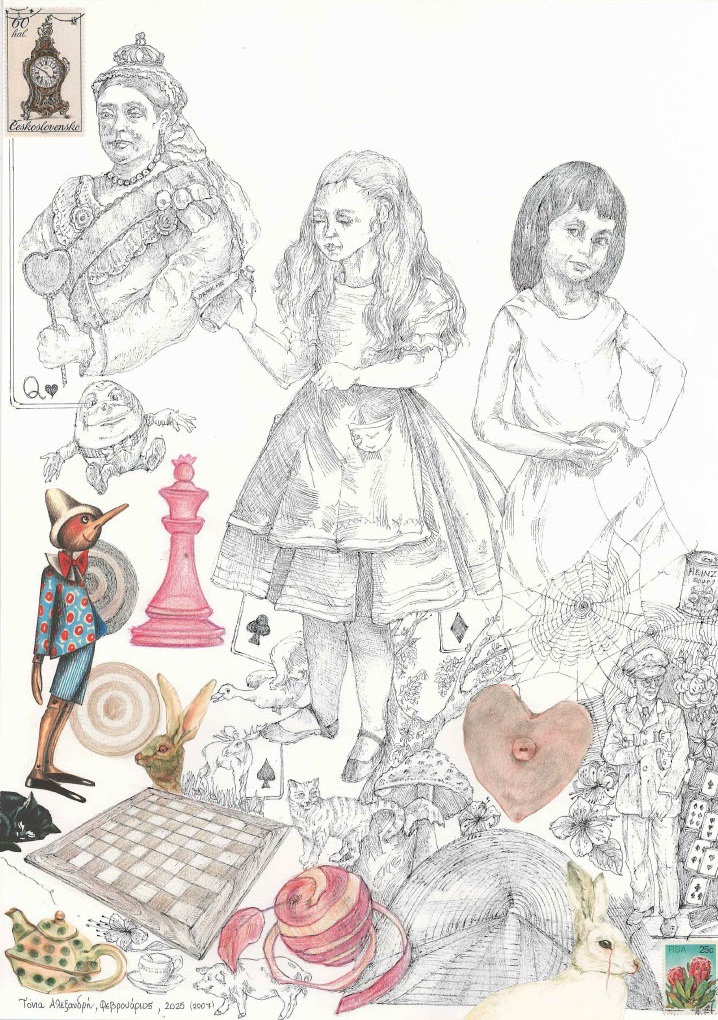
Today’s post centres on Alice’s Adventures in Wonderland, written by Charles Lutwidge Dodson (1832-1898), known as Lewis Carroll, its many layers of interpretation, and diverse meanings that people have attached to the Alice books through time and across cultures. It has come about after spending the last three weeks reading relevant articles and papers, and it could be considered as an introduction into some of the many interpretations and ideas around the Alice books. The post is much longer than usual, and I did consider breaking it up, but ultimately decided to post it in one part. I hope it doesn’t tire those who decide to read it.
I have accompanied today’s piece with relevant artwork, a recent drawing and two older ones, made at the end of 2006, beginning of 2007. Alice in Wonderland imagery and symbols have appeared in one form or another in a lot of the artwork I’ve created, and will probably become the theme of my next art project, as I hope to soon continue the PLACES series in a slightly different format.
Introduction
Lewis Carroll’s Alice’s Adventures in Wonderland and Alice’s Adventures Through the Looking Glass have captured the hearts and imaginations of children and adult readers for generations, offering a rich world of unforgettable characters, bent logic, talking animals and flowers, ravens that are like writing desks, surreal tea parties and unexpected situations. However, underneath the whimsical and the surreal lie deeper themes that have intrigued both readers and literary scholars across contexts. Perhaps so many generations have been fascinated with the stories because in our everyday lives, we may all sometimes find ourselves navigating through situations that feel surreal or nonsensical, much like Alice in Wonderland.
The story can serve as a metaphor for the journey of self-discovery, as Alice encounters various characters and challenges that push her to question her beliefs and assumptions about the worlso, accept both uncertainty and ambiguity in life, and the wonder and mystery, all the while connecting the fantastical to the real world. The themes and meanings people have attached to the stories range widely from the effects of ingesting mind-altering drugs and mental health, growing up and changing, social games, communication and language, the nature of our mind to religion and politics, a critique of Victorian norms and paedagogy, and colonization.
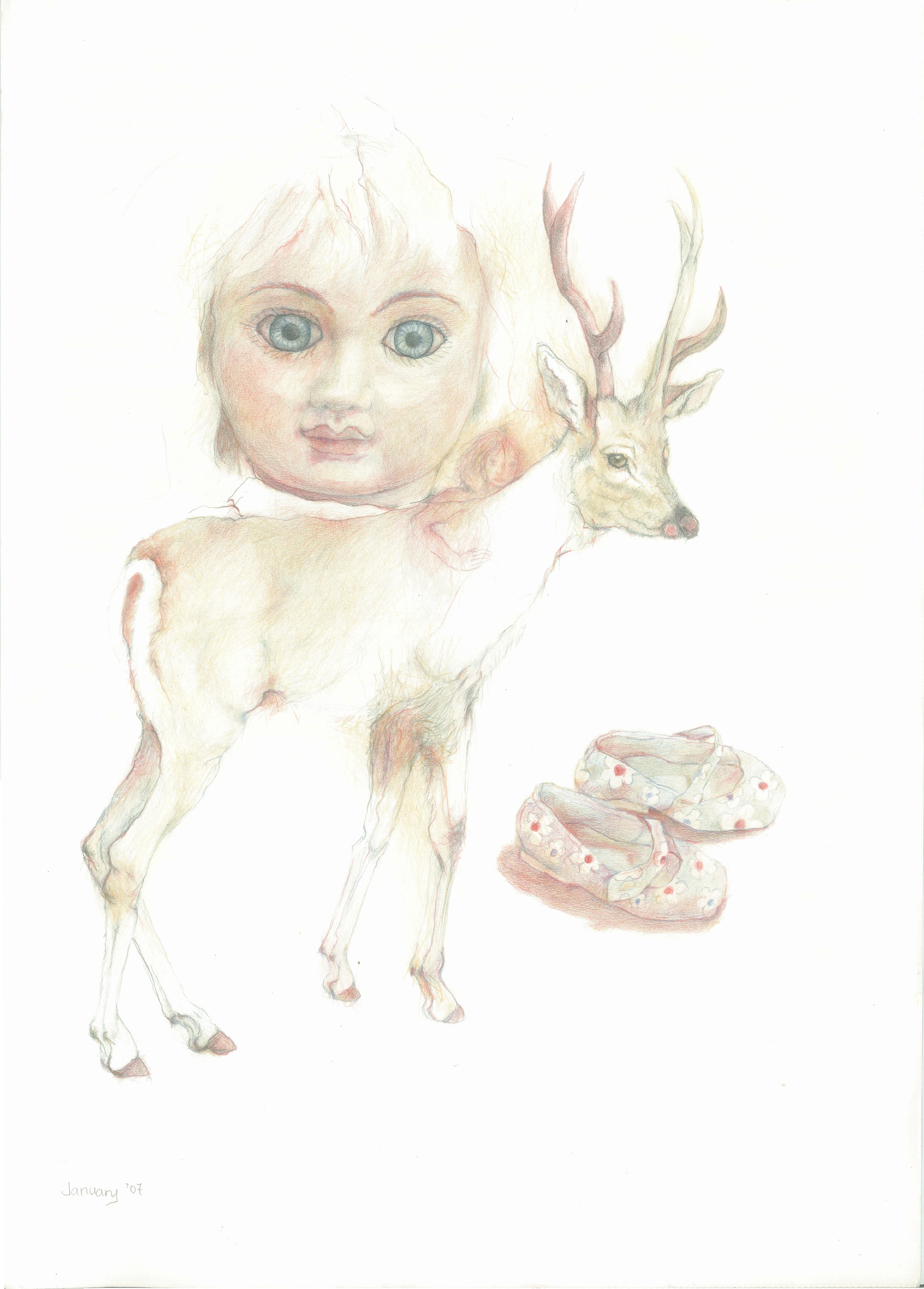
Narratives can be read at different levels, especially, as we grow older, fairy tales and myths can be interpreted and understood through different lens by different people or age groups, as each person projects their own subjectivity, knowledge or expertise. A hundred and sixty years later Alice in Wonderland has inspired film directors, musicians, writers and artists across countries. It has not only influenced Freudian psychology and analysis, but also shaped our understanding of the brain and modern neuroscience. It explores many ideas lke whether there’s a continuous self, how we remember the past and think about the future, cognition, language and consciousness.
Also, the story is a dream, and therefore, lends itself to interpretations. It’s about a girl, who falls asleep. Literally falls as she catapults down a tunnel. The story mostly takes place in an underground world, and at the end we discover it is a dream, so Carroll might have been alluding to the unconscious and the story might contain stories from his own dreams. In dreams displacement can take place, where our intentions and emotions are transferred onto another person, animal or object mingled with truths and events of our daily life.
This was a surreal story Carroll told during a boating trip on the Thames, to the dean’s young daughter, Alice Liddell, who then badgered him to write it down, and many have suggested that its original telling was probably to entertain, enchant and give pleasure; however, the final written version of Alice’s adventures must have been a better thought out process, and therefore, Carroll might have put a lot more in it, to create a more layered narrative. Some believe that Carroll might not have been aware of some of the meanings that have since been found within the story, and that he most likely wrote it only to entertain. On the other hand, one could also say that maybe he was quite aware and was able to create an entertaining narrative that contains the whole mosaic of life and society. Others consider the tale to have didactic elements. It certainly reads like a satire and touches upon the salient topics of discussion of that era.
Some experts on children’s literature suggest that the notion that the surreal aspects of the story are the result of mind-altering drugs simply resonates with the culture of the 60s, and onwards, not Victorian readers, where recreational drugs were not commonplace. Therefore, the mushroom is magic in the context of the story, like the pumpkin is magic in Cinderella. Many interpretations might reveal more about our own times, cultures, ideas and fears. We may never know for sure, but I don’t think that is important because any time we interact with any kind of art we are bound to impose some part of our own experience and understanding, as in some sense we make it our own.
A brief refresher of the story
Alice, a young girl, follows an anxious rabbit down a rabbit hole into a fantastical world. As she navigates this dream world, she encounters a host of eccentric, and at times, obnoxious characters, animals and flowers that talk and strange situations, like the grinning Cheshire Cat, the tea-loving Mad Hatter, two identical twins, an egg shaped person, the cruel Duchess, the ruthless Queen of Hearts, and many more. She soon discovers that things work very differently from what she is used to. Food and drinks have strange effects. She grows and shrinks in size, plays a game of croquet with live flamingos, attends a mad tea-party that seems to go on forever, and is required to deal with the chaos and tyranny running through the courthouse.
In the end, Alice wakes up from her dream and realizes that her adventures in Wonderland weren’t real after all. Although she’s initially disappointed, she realizes that her adventures in Wonderland have left a lasting impression, and that the lessons she learned and her experiences there have helped her grow and mature.
Some characters
This is a brief presentation of some characters. There is more about these and others in various parts of this text.
The White Rabbit:
“The hurrier I go, the behinder I get…. I’m late, I’m late, for a very important date!”
Alice
Many interpretations focus on the inspiring qualities that Alice represents, like the importance of imagination and creativity. She is curious, adventurous, open-minded and willing to try new things, which make her an appropriate protagonist for a journey through the whimsical world of Wonderland. She’s not only eager to explore, but also challenges and stands up against arbitrary authority and refuses to be intimidated by the characters she meets. She stands up to the Queen and she questions the Mad Hatter’s nonsense, exposing norms and oddities inherent in Victorian England aristocracy and culture. Her experiences in Wonderland challenge her understanding of reality and encourage her to question what she thought she knew. As she navigates this bizarre world, which at time overwhelms her, she learns important lessons about herself and the world around her.
The Cheshire Cat
The Chesire Cat that disappears and reappears at will, might be one of the wiser or more sensible creatures in Wonderland, although his wisdom is hidden in jokes and riddles. The cat is often associated with the idea of dreams and illusions, which aligns with Alice’s journey through Wonderland, which is a dream. He acts as Alice’s guide. Following his clues, Alice enters this surreal world with more confidence. He is viewed as representing the elusive nature of things and the mysteries of the universe, the concept of ambiguity and uncertainty. Throughout the book, Alice finds herself in situations where things are not quite what they seem.
The Mad Hatter
There are many different interpretations of the character of the Mad Hatter with his nonsensical comments, riddles with no answers, and strange behaviour. Some suggest that he represents the chaos and confusion of Wonderland and a symbol of the decline of the British aristocracy. Another interpretation is that the Mad Hatter represents the madness of the Victorian era. During the Victorian era, people seem to have been fascinated with madness and mental illness, and the Mad Hatter could be seen as a reflection of this [more interpretations below].
The Twins, Tweedledee and Tweedeldum
Tweedle Dee and Tweedle Dum, are a pair of strange of mirror-image twins that look physically joined, and who appear seem to complement each other. They almost look like inanimate objects, wax dolls, as they comment themselves. They recite poems and songs and finish off one another’s sentences, and like most characters in Wonderland, they speak in nonsense and riddles. They seem intimate and close, but they’re not as calm as they seem and soon they’ll use an umbrella as a weapon, when their disagreement escalates into a fight. Another quality of Tweedle Dee and Tweedle Dum’s duality is their habit of telling a story and then immediately presenting the other side to it, suggesting perhaps the importance and value of taking into account both sides of the story or viewing things from different perspectives.
The Tweedle twins are also mirror-image twins. In an article, Twins in Wonderland (2023), by Helena de Bres about her book, she writes: “But as you’d expect in a Looking-Glass world, the whole territory behind the mirror is replete with reversals and inversions of the usual order of things. Alice is given dry biscuits to quench her thirst, and it’s only by running very fast that she can avoid moving. Mathematician and writer Martin Gardner notes that “nonsense itself is a sanity-insanity inversion. The ordinary world is turned upside down and backward.”
Talking Flowers
Although the talking animals and fantastical creatures of Wonderland are the most memorable characters, flowers also play a significant symbolic role. The first strange encounter that Alice has is her interation with talking flowers that are anthropomorphized and given personalities, who tell her that although flowers are usually asleep, they can all talk. The flowers are constantly changing color and shape, which some have interpreted as reflecting the transitory nature of all things in life and some as the changing colours of people, perhaps the different parts of themselves and the different masks they wear. The flowers seem sweet and innocent at first, but soon reveal themselves to be petty and cruel, perhaps reflecting the idea that even those that seem harmless and sweet can harbor darker motives and intentions. The Rose, for instance, is judgmental of Alice;s appearance, and the daisies make fun of her when she does not know the meaning of something, and when she tries to speak they all begin speaking together producing a terrible noise.
Growing Up
Traditionally, Alice’s Adventures has been thought to reflect themes of growing up and leaving childhood behind, due to recurring motifs of transformation and change. This idea is reflected throughout the book. Alice’s journey reflects a girl’s challenges as she grows up. She undergoes bodily changes and her sense of self and identity become destabilized, she resists authority and arbitrary societal rules, and tries to understand the games that people play around her, even the perils of authoritarian justice in the form of the Queen of Hearts.
Creatures and landscapes around Alice change constantly, while she herself undergoes a series of physical and emotional transformations as she learns important lessons about the process of growing up and the social world. Alice’s physical change after drinking he potion from a bottle labeled “Drink Me” is one of the more memorable examples of transformation in the story. When she drinks from the bottle, Alice shrinks down to a tiny size and must navigate a world that suddenly seems much larger and more intimidating. This transformation may represent the challenges that come with growing up and facing new and unfamiliar situations that might feel daunting. Alice must use her wits and resourcefulness to find her way in this strange new world, just as children must learn to adapt and navigate the complexities of the adult world.
At times Alice seems to feel torn between her desire to remain a child and her longing to be a grown-up. As she navigates Wonderland, she struggles with her own identity and her place in the world. This is epitomized in the scene where Alice encounters the Caterpillar and is asked to identify herself. She responds, “I know who I was when I got up this morning, but I think I must have been changed several times since then.” This sentence captures the confusion and uncertainty that often come with the process of growing up and discovering one’s identity and place in the world.
It is also suggested that Alice’s adventures can be seen as a metaphor for cognitive development. She encounters riddles and puzzles, and logical paradoxes that require her to think critically and problem-solve, which one could claim reflects the cognitive processes involved in learning and understanding the world around us.
A psychoanalytic critical approach
Alice’s advantures are part of a dream, and as such, the narrative seesm to beg to be analysed. Over time many of Freud’s theories have been applied to the book and many have focused on the sexual symbolism in the story, in particular, they refer to the symbolism of the door, lock and key. They have also focused on the writer himself, an “unmarried clergyman of the strictest virtue,” and how his constrained life might have unconsciously found an outlet in his writing. Scholars have also focused on the motifs (recurring structures, contrasts, literary devices) in Alice’s story. For instance, the dream motif explains the abundance of nonsensical events in the story and allows for characters and things of the real world to mix with elements of Alice’s subconscious.
However, more recently psychoanalysts have viewed Alice’s adventures more as an allegory for growing up, which involves the separation from identification with others, the developing of an ego and identity, the learning to tolerate frustration, and a better understanding of the world. Others have considered Alice a portrayal of that early developmental stage in childhood, when the child conceives consequences and reason, which has been suggested as one reason why children relate so much to the story. Apart from Alice, other characters in the story have also been analysed.
The archetypal heroine’s journey
Another way of interpreting Alice’s adventures is through the lens of a heroine’s journey and the importance of embracing one’s true self and disentangling oneself from certain societal constraints and others’ expectations placed upon us. Alice follows the White Rabbit, who is anxiously obsessed with time and order, and could be described as the herald archetype that calls the hero character forth into adventure. She falls down the hole (the sense of falling is common in dreams) and lets go of control, ready for adventure. In the story Alice changes size, which can be interpreted as adaptation, necessary in our lives, and also, part of growing up and surviving.
The caterpillar, the archetypal wise character, asks: “Who are you?” Alice is not sure. She remembers who she was when she woke up this morning. But believes she has probably changed a bit since then, which touches upon the question of whether we have a constant solid self, and the fact that we are always changing and evolving. One could suggest that the caterpillar is encouraging introspection and assisting her growth and transformation. The Chesire cat could be viewed as the archetype that disrupts the order of things. In Wonderland, as in the real world, there is a lot of chaos, the Mad Hatter and the March reflect the madness and the chaos.
At some point Alice feels lost when it gets dark in Wonderland, but she receives instructions on how to return home from the Chesire Cat; however, there are antigonists and obstacles she must first overcome. She needs to find her way through a labyrinth and then confront the tyrannical, authoritarian Queen, who orders “Off with her head.” The King, who one might view as a glimmer of hope, suggests a trial take place before the beheading. The Mad Hatter manages to disrupt the tyranny running through the courthouse, as Alice ingests the magic mushroom that helps her grow big. Finally, the Chesire Cat initiates the journey back home as Alice runs through the stages she travelled through in reverse with the Queen after her.
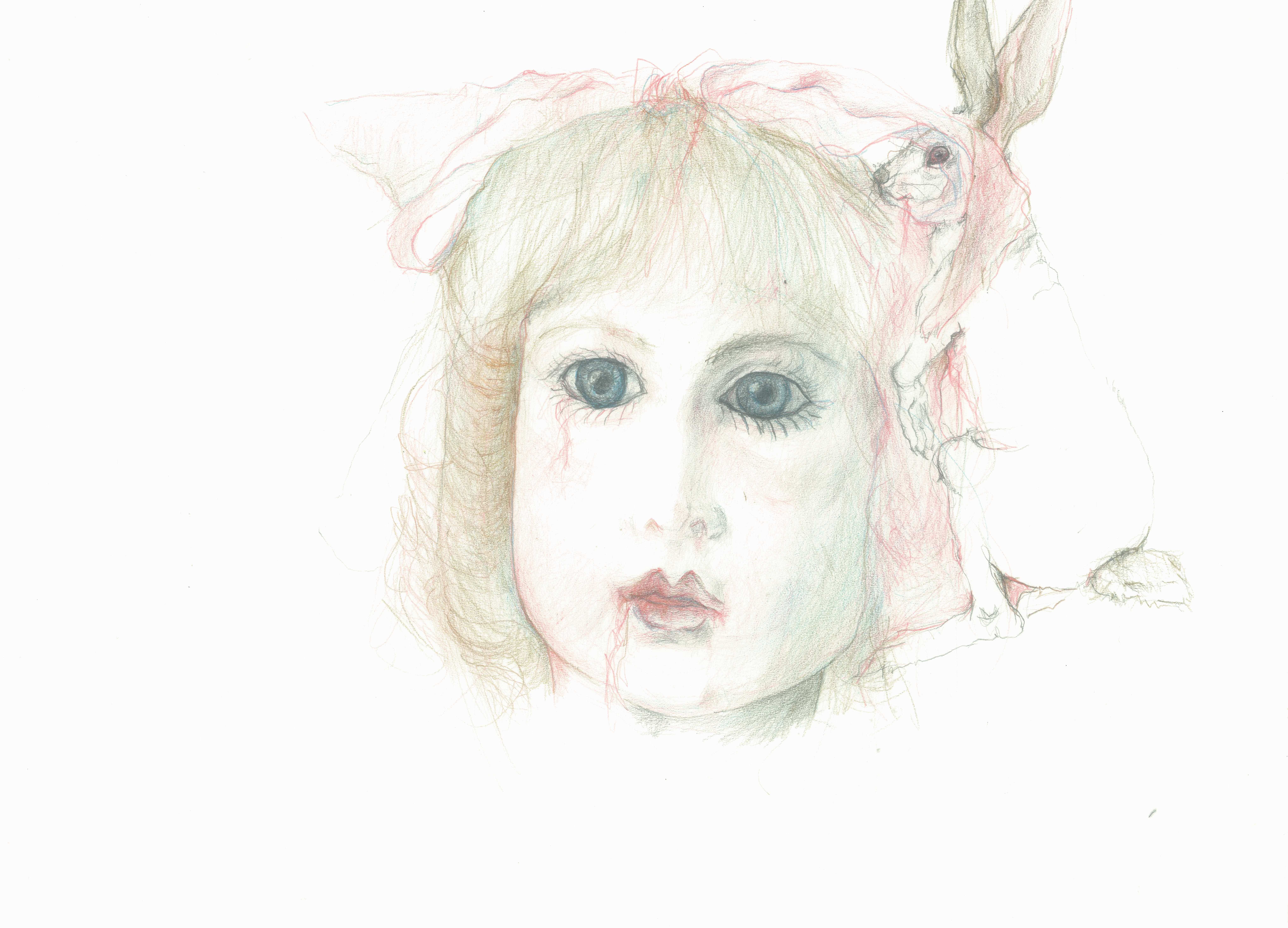
The food in Wonderland
Food plays a significant role in the books as in real life, and the story returns to the subject of food and drink over and over. Different readers have attached different meanings. Some view the food in the Alice stories as a metaphor for temptation and the consequences of indulging in these temptations. Food could also be seen as a representation of the shifting nature of reality in Wonderland or the effect that our surroundings have on us, and why we should be careful about what foods, drinks, thoughts and viewpoints we consume or expose ourselves to. The EAT ME and DRINK ME scenes have also been interpreted as resembling the rite of Holy Communion, and some critics have suggested that the story is in part about eating disorders [Carroll ate very little], others view it as been inspired by actual picnic teas. The food and drinks that produce changes in size can also be viewed as vehicles that allow Alice to adapt, survive situations and continue her adventure:
‘I know something interesting is sure to happen,’ she said to herself, ‘whenever I eat or drink anything: so I’ll just see what this bottle does. I do hope it’ll make me grow large again, for really I’m quite tired of being such a tiny little thing!’
The Mad Hatter’s tea party turns out to be a party without tea, and many of Wonderland’s creatures spend their time eating and worrying about being eaten. Alice is constantly being offered food and drinks that have strange and unexpected, positive and negative effects. In chapter one Alice takes down a jar of sweet orange marmalade from one of the shelves right after falling down the rabbit hole. The jar was empty, but Alice did not want to drop the jar for fear of killing someone. Alice worries about whether they will remember Dinah’s [her cat] saucer of milk at teatime.
Later Alice’s eye falls on a little glass box under the table. There’s a very small cake in it, on which the words ‘EAT ME’ are marked in currants, which makes her open out “like the largest telescope that ever was” and grow as tall as the ceiling. In another instance in chapter four she notices that the pebbles were turning into little cakes: “If I eat one of these cakes, she thought, it’s sure to make some change in my size…” After the race-course with the animals, Alice in despair put her hand in her pocket, and pulled out a box of comfits, which she handed around to everyone as prizes.
There is also reference to apples, meaning potatoes. In French potatoes are called pomme de terre, which translates to apples of the earth, and in Victorian times potatoes were referred to as Irish apples in slang. Suet, a kind of animal fat, is or was a common ingredient in traditional British recipes. Mushrooms are first introduced in the story with the blue caterpillar. Alice nibbles tiny pieces of mushroom, growing and shrinking as she sees fit.
Eggs:
“I’ve seen a good many little girls in my time, but never one with such a neck as that! No, no! You’re a serpent; and there’s no use denying it. I suppose you’ll be telling me next that you never tasted an egg!” [said the Pigeon, in a tone of the deepest contempt].
“I have tasted eggs, certainly,” said Alice, who was a very truthful child; “but little girls eat eggs quite as much as serpents do, you know.”
“I don’t believe it,” said the Pigeon, “but if they do, then they’re a kind of serpent: that’s all I can say.”
And soup:
In chapter six, we read about the cook making some kind of soup that seems to contain a lot of peeper because everyone is sneezing. There are also references to pepper in chapter nine, where the relationship between food and personality traits is explored: “Maybe it’s always pepper that makes people hot-tempered,”says Alice, “and vinegar that makes them sour—and camomile that makes them bitter….. and barley-sugar and such things that make children sweet-tempered….,” and in chapter eleven: “The next witness was the Duchess’s cook. She carried the pepper-box in her hand….” Soup is also brought up in Chapter ten during the Turtle’s rendition of “Turtle Soup”
Truths about the brain or through a brain’s lens
In a BBC article (25/02/2015) David Robinson writes about five things that Alice in Wonderland reveals about the brain that have interested neuroscientists. He refers to the potion drinking and magic cake eating scenes, which help Alice, shrink and then grow so tall her head touches the ceiling. It seems that these experiences have been observed in people, especially, young children. This is known as Alice in Wonderland Syndrome. Lewis Carroll’s diaries show that he suffered from migraines, which can sometimes trigger these experiences, which lead some to speculate that he might have been inspired by his own experience. Grant Liu, a neurologist, suspects that this is caused by abnormal activity in the parietal lobes, responsible for spatial awareness, causing these fleeting illusions, which are generally harmless.
In the article there are also references to Alice’s Adventures Through the Looking Glass, where the nature of speech, and the grammatical correctness of nonsense words, are explored. Robinson writes that neuroscientists use “Jabberwocky sentences” during brain scans to show that meaning and grammar are processed separately in the brain. When Alice meets Humpty Dumpty they explore the nature of words and sound symbolism, a philosophical question that dates to Plato.
Lewis Carroll, was a talented mathematician and logician, who incorporated many verbal and logical tricks in his writing, and played with language and invented words throughout the narrative. The books contain nonsensical wit, which probably reflects the fact that words often fail to convey what the speaker means, and often through language we can say more, less and often something other than what we mean or intend to say. We do a lot with language. Language can facilitate communication, but also cause confusion. Some parts of the stories assume a degree of local knowledge, and some critics believe that the story is full of references to Oxford and people that Carroll knew. Also, maybe language fascinated Carroll because he and some of his ten siblings stuttered.
In relation to memory, Robinson also refers to Alison Gopnik, who claims that Carroll’s book “explores so many ideas about whether there is a continuous self, how we remember things from the past and think about the future – there’s lots of richness there about what we know about cognition and cognitive science,” In the story Alice has discussions with the White Queen, whose comments on memory are quite accurate. Robinson cites Eleanor Maguire at UCL, who says: “Since the mid 2000s neuroscientists started to realize that memory is not really about the past, it’s about helping you act appropriately in the future.” In some sense memory and foresight use the same “mental time travel” in the same brain areas.
Dreams often contain objects that morph into new characters and forms. Robinson notes that the shapeshifting characters in the book, like the Duchess’s baby that morphs into a pig, or the Chesire cat, evoke the sleeping mind.
The fifth theme is human imagination. Robinson refers to Travis Proulx, who has studied how surreal literature influences our cognition positively. He refers to the book scene, where the Queen extols the virtues of thinking about mpossible things. Gopnik, he cites, has found that children who play pretend and engage in thinking the impossible tend to develop more advanced cognition, understand hypothetical thinking better, and also, develop a more advanced “theory of mind.”
Underlying psychedelic theme?
Since the 1960s there has been a trend for readers to identify an underlying psychedelic theme in the book. The idea that Alice’s adventures might have been inspired by hallucinogenics* has been pursued by many writers, artists, musicians, critics, scholars and analysts. The use of drugs like LSD or psilocybin can lead to a sense of being flooded by stimuli or that you are one with the objects around you or with the ground, and the dissolution of the ego, which enhances the questioning of ideas and opinions and can give new meanings to already familiar stimuli. It causes significant alterations in perception*, mood, and thought, a distorted sense of time, and visual hallucinations.
Parallels have been made between Alice’s trip to Wonderland and an LSD trip because there are scenes that are reminiscent of drug use effects. For instance, the caterpillar smokes an elaborate water pipe, there’s the magic mushroom, the erratic movement of time, the story’s surreal and illogical elements, and Alice’s repeated changes in size can be seen as a reflection of the disorienting effects of drugs. The term “White Rabbit” in slang refers to LSD.
Some suggest that Jefferson Airplane’s 1967 White Rabbit lyrics might have cemented this interpretation:
“When the men on the chessboard get up / And tell you where to go / And you’ve just had some kind of mushroom / And your mind is moving low / Go ask Alice I think she’ll know.”
There are also references in the film, Matrix: “You take the blue pill, the story ends, you wakeup in your bed and believe whatever you want to believe. You take the red pill, you stay in wonderland, and I show you how deep the rabbit hole goes.”
*****************************************************************************
*Notes on hallucinogenics
Hallucinogenic experiences provide access to levels of consciousness that could help us understand the workings of the brain and the mind. It is believed that despite the limitations of what and how much can be inferred and generalized from hallucinogenic states, apart from their psychological effects and psychiatric uses, there is a potential to shed light on information processing mechanisms in the brain.
One example is the consistency of basic visual forms common across psychedelic states, cultures and conditioned experience, which suggests that these experiences reflect something about the mechanisms of the visual system that gives rise to visual states in ordinary consciousness. Experiments have been conducted, and the first was performed by Henreich Kluver in 1966. He found four main forms: lattice like honeycomb or chessboard, spirals, tunnel like, and cobweb like forms.
According to a theory by mathematical biologist Jack Cowan, the nerve cells of the visual cortex that are tasked with detecting the edges of objects are over-stimulated, and this gives rise to the intense and characteristic visual phenomena: spirals, grids, arcades, chessboards. The findings so far, suggest that psychedelic substances reduce the activity of the thalamus in the brain, resulting in information from external stimuli, which would otherwise have been filtered, overwhelming the individual.
During the Cold War experiments were conducted on military personnel using LSD, electroshock, hypnosis, sleep, and other techniques, in the USA as part of a campaign of psychological warfare that could render enemy troops mentally incapacitated. The military’s research on LSD typically ended because the effects of LSD were so unpredictable that the drug could not be effectively weaponized, and research subjects experienced a plethora of lasting and serious psychiatric symptoms. Psychiatrists, who led much of this research, raised a host of ethical concerns about dual roles, disclosure, and duty, the nature of the experiments and the adverse effects.
In her book Brainwashing Kathleen Taylor, writes tht although this research may have failed in their aim of gaining total control of a human being’s thoughts and actions, many techniques had been applied: “mind-changing substances such as LSD, hypnosis, sensory deprivation, even ‘depatterning’ experiments…… usually combined with prolonged, drug-induced sleep, the goal being to turn the subject’s mind into a blank slate upon which new beliefs could then be imposed. Some of these tortures were abandoned—occasionally for ethical reasons, more often when they failed to prove reliable. Depatterning, for example, could erase memories and leave its victim confused and passive, but imposing new beliefs proved harder than expected.” (p. 350, KINDLE edition)
There has been a new wave of psychedelic research, but the current investigations into psychedelics are scientifically different, and hopefully, the rules will be upheld and the rights they guarantee respected. Now, the context of these studies and practice are health care and the goal of the current research is liberation of the mind from cycles of rumination and trauma, better treatments for chronic posttraumatic stress, treatment-resistant depression or severe substance use problems.
***************************************************************************
However, to return to Alice’s adventures, academics and readers, differ in opinions in relation to whether Alice’s adventures reflect mind-altering drug experiences. Experts are sceptical about claims that suggest that Lewis Carroll ever used mind altering drugs or was a recreational opium user, even though, during this time, opium use was legal. Some scholars suggest that while these associations may seem obvious to a modern audience, there’s no evidence that Carroll ever experimented with laudanum or other drugs popular in the Victorian era.
Neurological, psychiatric, medical conditions and even poisoning
Alice’s Adventures in Wonderland and Through the Looking-Glass contain many fantastical elements and characters, which have been linked metaphorically or symbolically to a slew of neurological, psychiatric or medical conditions, and even poisoning. To mention a few, it has been suggested that Alice;s dramatic changes in size, as mentioned above, reflect micropsia and macropsia, conditions where objects appear smaller or larger than they are, which can occur in epilepsy, migraines, and drug intoxications. Alice has also been associated with various mental disorders and dissociative symptoms, and the dormouse with narcolepsy, characterized by excessive sleepiness and sleep attacks. The twins’ display disproportionate aggression, and the White Rabbit’s constant worry may be likened to symptoms of general anxiety or existential dread, and one could interpret the Queen of Hearts as a representation of narcissistic personality disorder.
The Caterpillar’s smoking and altered state of consciousness could metaphorically represent the effects of drug use. It has been suggested that the fact that the Cheshire Cat’s grin remains after the cat has disappeared, represents visual hallucinations, which are associated to drug use or conditions like migraines or other more serious mental disorders. The Mad Hatter’s erratic behavior and the phrase “mad as a hatter” has been associated with lead and mercury poisoning. Carroll most likely had known that in the 19th century, mercury was used in the manufacture of felt hats, which lead to neurologic damage in hatters, characterized by confused speech, tremors and mood swings.
And then, there are others, who have proposed that Alice’s adventures through Wonderland might reflect Lewis Carroll’s autism like traits. Some have suggested that fiction and “autistic traits” are a conducive partnership. A lot of brilliant people like scientists, artists, writers, inventors, film directors, and others, whose personalities and traits have been scrutinized, have received labels. This might reflect more recent trends of categorizing and pigeon holing people, and projecting psychological interpretations on everything. Many have only been viewed this way in our current times, as many of these diagnoses did not exist in their era. In any case, certain traits like a more obsessive nature, greater capacity for selective focus, self-discipline and perfectionism might be conducive to accomplishing things and / or producing extraordinary creative works.
Of course, all these associations are speculative and we do not know that Carroll’s intention was an exposition of medical categories and conditions. We must remember that the DSM with its countless categorizations of clusters of traits was not a thing back then, and Carroll might have simply used his observations of human traits and characters, his own experiences, and his imagination to weave his tale. On the other hand, our ability to link this Victorian tale to so many contemporary ideas or aspects of modern life makes the tale diachronic / timeless.
Political allegory or the politics of Alice
Many view Carroll’s Alice books as a political allegory. Those who have analysed Alice’s stories through a historical approach suggest we take into account context, culture, philosophy, norms and trends of the Victorian era for our interpretations of Alice’s adventures in Wonderland.
Wonderland is ruled by an aggressive, quick temperd queen and a shambolic legal system, which could reflect Victorian Britain. The Queen of Hearts would correspond to Queen Victoria, and this part of the story seems like an obvious metaphor for authoritarianism. There also seems to be some evidence that Carroll was not over-awed by the Queen. In the story the queen is a powerful and intimidating figure, irrational and prone to angry outbursts, who along with the duchess, represent aristocracy and the oppressive nature of authority and control. These parts of the story make a fascinating representation of the world outside Wonderland. She’s constantly issuing orders and demanding obedience from her subjects, and is willing to use violence to enforce her will. The Queen of Hearts is famous for her phrase, “Off with their heads!”, which she uses to punish anyone she perceives as crossing her, including Alice:`
“Hold your tongue!’ said the Queen, turning purple.
`I won’t!’ said Alice.
`Off with her head!’ the Queen shouted at the top of her voice.”. (Chapter 12)
The fact that she doesn’t need reason or rules might reflect the idea that justice is often arbitrary and unfair, and also, the British justice system at the time. Many critics propose that Alice belongs more to the genre of political satire than Carroll might have realized.
Some have suggested that the book is an allegory for colonization. Alice was written during the heyday of British colonization. In this strange land Alice is beffudled by the natives’ ways of doing things and tries to impose her values. Some have suggested that the Walrus, the Carpenter and the Oysters represent England and its colonies, others ssuggest they represent Peter, Jesus and the disciples, repectively. Other interpretations suggest that the Walrus and the Carpenter were archetypes of politicians of that period. Through these lens Alice is is seen by some as an imperialist trying to impose her ideas and values on the “uncivilized natives” of Wonderland.
More importantly, for many Alice’s Adventures in Wonderland marks the shift in Victorian ideals of childhood from discipline and essential sinfulness to education, play, and innocence. Alice can also be considered a commentary on the strict societal norms and conventions of Victorian England. The character of Alice could also represents child agency, particularly in response to the Queen’s authoritarianism and house court events.
Her encounters with characters like the Queen of Hearts and the Mad Hatter highlight the absurdity of strict social hierarchies and the importance of individuality and self-expression. Morton Cohen argues that Alice critiques Victorian ideals of childhood and that it’s an account of children’s plight in Victorian society, in which Alice’s mistreatment by the creatures of Wonderland reflects Carroll’s own mistreatment by adults as a child, and Victorian peadagogical norms. Critics have noted that there are traces of many of the social issues and debates of the Victorian era in the Alice stories, which have also been read as a satirical attack on children’s treatment and education, adding that many of the adults in Wonderlad are cruel, arbitrary, irrational or mad.
From a historical approach one would also focus on the discoveries in the fields of science and mathematics during that era, considering that Carroll was a mathematician and would have been aware of the development of symbolic algebra. Some scholars have found parallels between his nonsense writing and symbolic algebra and claim that as a conservative mathematician he would have found them ludicrous, and thus, made fun of them in his books. Also, Charles Darwin’s Origin of Species was published a few years before the Alice books, and some critics argue that this inspired Carroll to include several references to the theory of evolution.
In “Alice in Wonderland: The Child as Swain” at: https://victorianweb.org/authors/carroll/white.html, William Empson argues that “the pool of tears represents both the primeval sea from which life arose and amniotic fluid; the caucus-race which follows refers to the theory of natural selection; [and] the ape which appears in the illustrations is man’s simian ancestor.” This reading is supported by Tenniel’s illustration…..”
Some have found that another social issue that the Alice books seem to include is the role of women in society. In Victorian times women were expected to be docile and domestic, but Alice is the opposite. She’s active, curious, brave, critical of surroundings. On the other hand, others suggest that Alice represents the Victorian model. (I hope to write more about feminist interpretations of the books in later posts).
Religion
Along with being an educator, mathematician and author, Lewis Carroll was also Deacon in the Church of England. His Christian faith and connection to the church, has led many to suggest that the Alice stories contain religious imagery or metaphors. However, other scholars claim that Lewis Carroll asserted in his writngs that he kept religion out of Alice in Wonderland just as purposefully as he kept it free from didacticism. This has not prevented scholars and others from viewing the stories through religious lens, and some have found the theme of spirituality or religion present throughout the book. It has been suggested that the story can be read as a metaphorical journey of spiritual awakening, where the only way for the protagonist to earn redemption is to break out of false reality. On the other hand, originally the book was called Alice’s Adventures Under Ground, which evokes a much older myth, that of the Mesopotamian goddess Inanna’s descent into the underworld, retold by the Greeks as Persephone’s descent into the underworld and return in Spring.
Some argue that Wonderland is a fictional world that represents heaven or paradise, and explores ideas and themes about illusion and insight similar to what many religions tell us. They argue that Carroll refers to biblical themes, characters and events to create a religious allegory. The Cheshire cat is considered to represent God. It seems to have knowledge about everything that goes on in Wonderland and can be anywhere it wants to be by vanishing and re-appearing, and when Alice was looking for an escape from the Queen, she looked up to the sky for answers, and it is the Cheshire cat that answers.
On the other hand, there are critics and scholars that argue that Alice stories can be read as a critique on the Church of England and that some of the song parodies in the books are parodies of religious songs:
From Divine Songs for Children by Watts (1715)
“How doth the little busy bee // Improve each shining hour,
And gather honey all the day // From every opening flower!……. “
How doth the little crocodile // Improve his shining tail,
And pour the waters of the Nile // On every golden scale!” (Lewis Carroll)
Metaphor for the internet
Finally, the story has been thought as a great metaphor for the internet world and how easy it is to get lost in it. It is suggested that many of the people one meets are like the characters in the story, and some of what is circulated is nonsense.
Conclusion:
Alice’s Adventures in Wonderland has been considered the first children’s masterpiece of modern fantasy. Every character and event in the story reflects some aspect of the world as seen through the eyes of a child, growing and changing. There has been, since the book was first published in 1865, an enduring fascination with this work, which has spawned many diverse and sometimes coflicitng interpretations and levels of understanding. It has attracted much critical attention, and while it’s an entertaining read, it also carries symbolism and a lot of the attention has centred on the hidden meanings that it might contain.
It has over time influenced many artists and writers, who have produced stories and images inspired by the original books. One might consider this natural as every element of Alice’s Adventures in Wonderland like the talking plants and animals, the strange characters, the nonsense and riddles, the magic foods and drinks, is filled with symbolism that can be interpreted in a number of ways. Also, the uderstanding and interpretation of stories and books change over time as society, social mores and ideas, change. Additionally, we all add an element of our understanding and subjectivity as we interact with art products, whether they’re books, images, music or films. Each person that comes into contact with a piece of art or text, whether an expert or not, makes it their own.
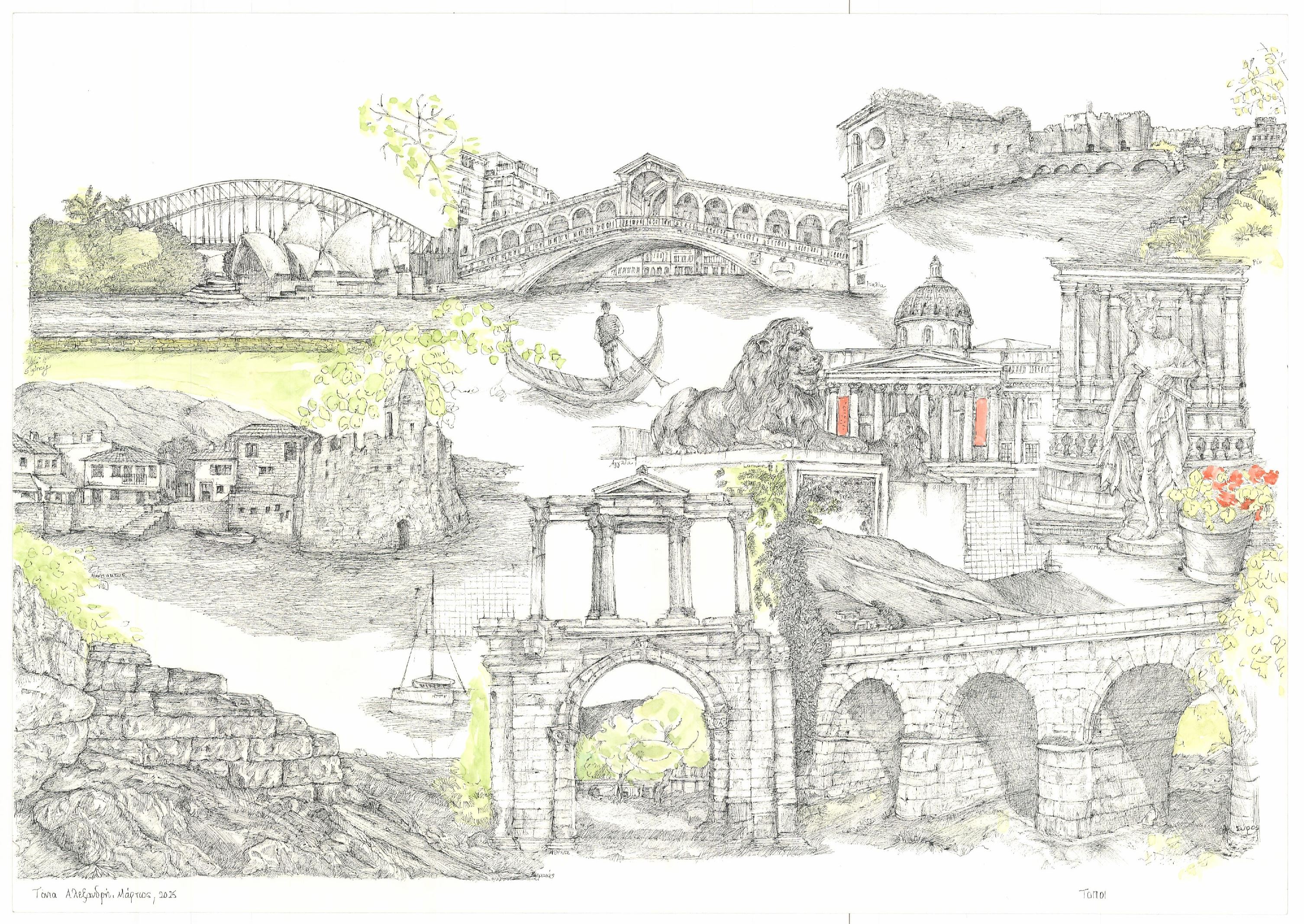
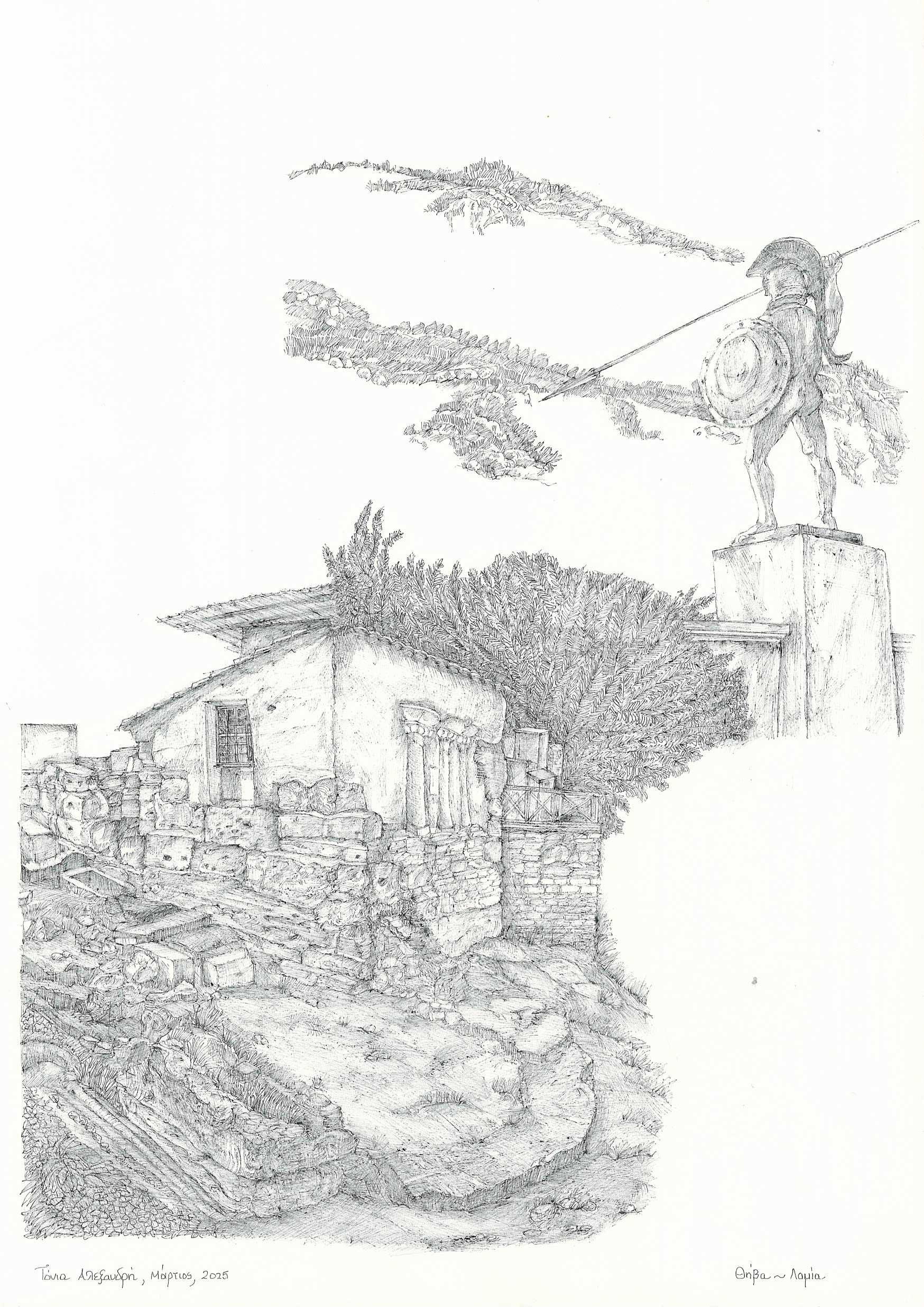

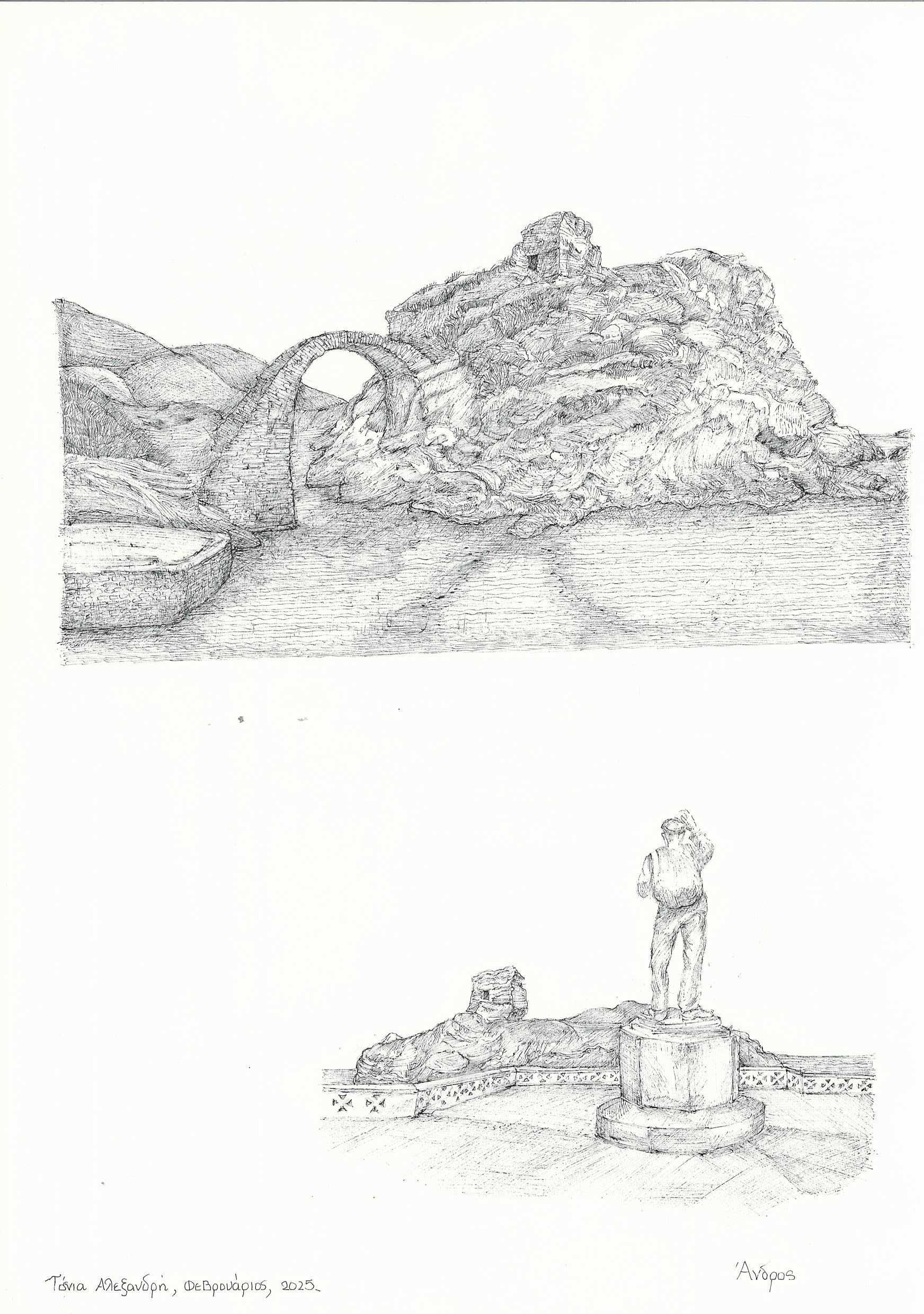
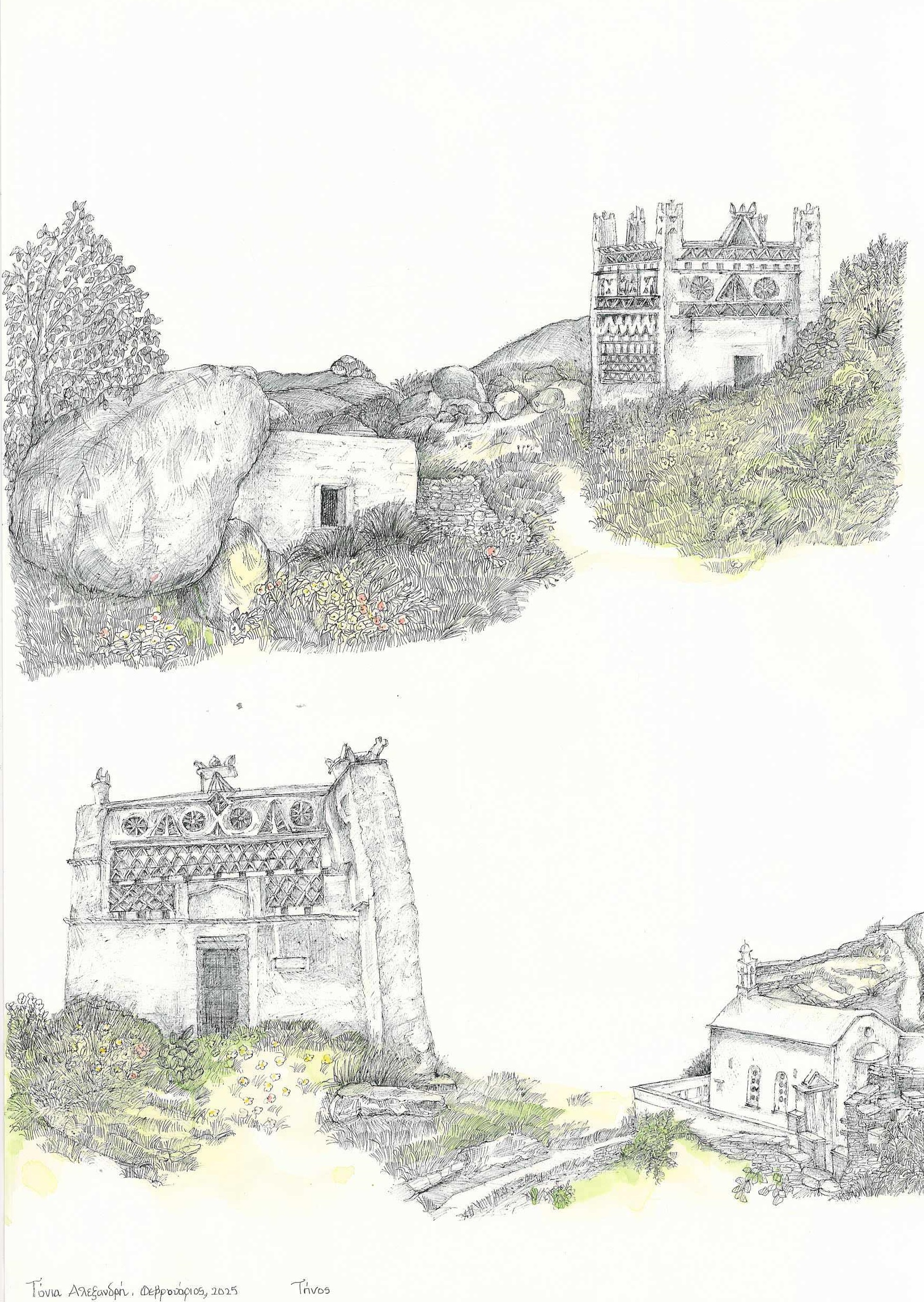
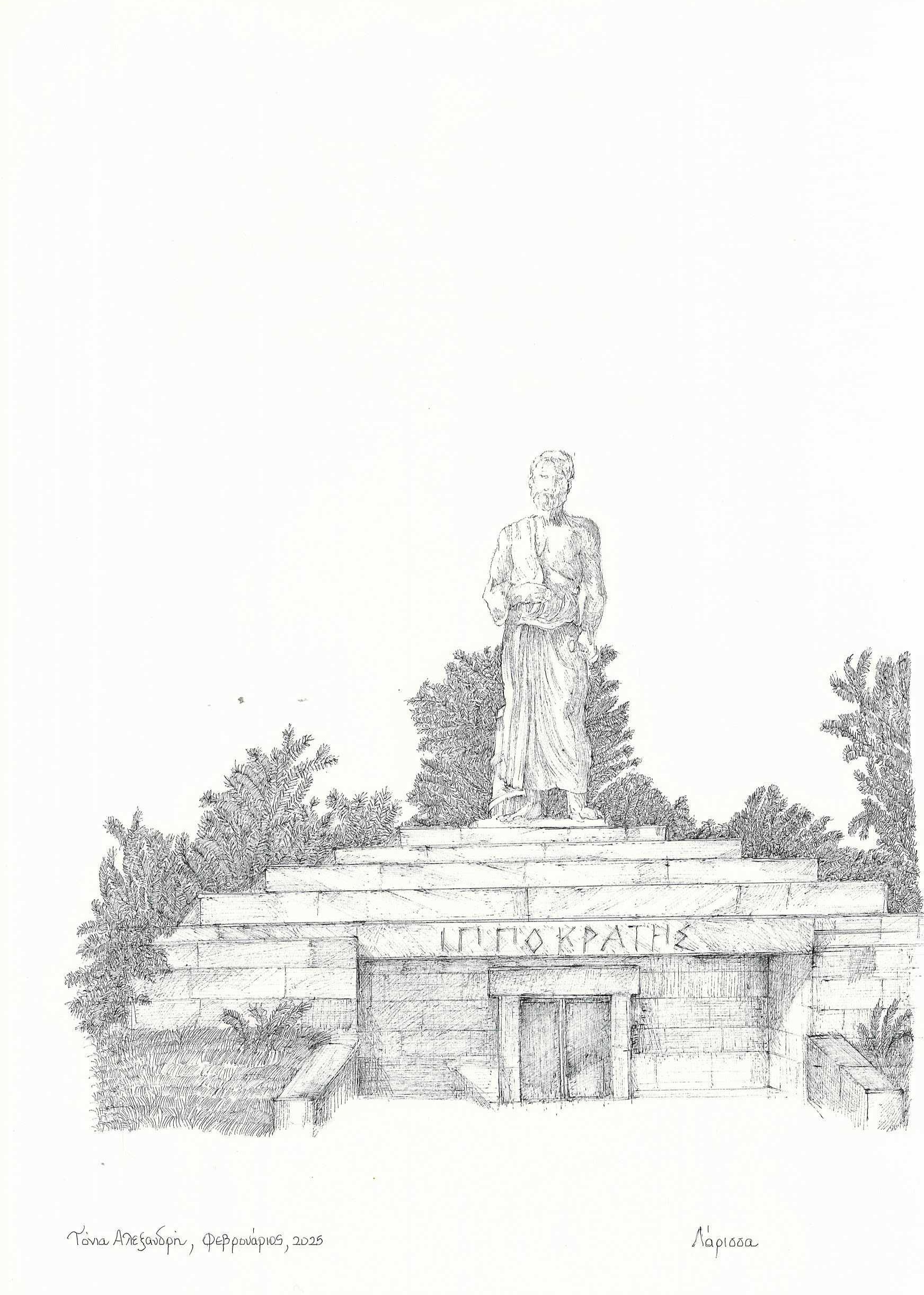
 “By making Alexandria rather than himself the subject of the poetry, Cavafy explored the inescapable relationship of Alexandrians to their home, best summarised when he acknowledges that ‘The city will follow you’. Cavafy reminds us that comprehending a place so infused with history and myth is not a matter of either perception or conception – it is both. To Cavafy, past and present Alexandria are strikingly similar. He imagines the city through the eyes of Greek Byzantines who’ve migrated from Constantinople, halfway in time between Alexandria’s founding and his own life: ‘Always, Alexandria remains herself’, he wrote, ‘For all the harm it’s suffered in its wars, / for all that it’s diminished, still a marvelous place’. The act of imagining Alexandria’s past inspired Cavafy to understand its present.”
“By making Alexandria rather than himself the subject of the poetry, Cavafy explored the inescapable relationship of Alexandrians to their home, best summarised when he acknowledges that ‘The city will follow you’. Cavafy reminds us that comprehending a place so infused with history and myth is not a matter of either perception or conception – it is both. To Cavafy, past and present Alexandria are strikingly similar. He imagines the city through the eyes of Greek Byzantines who’ve migrated from Constantinople, halfway in time between Alexandria’s founding and his own life: ‘Always, Alexandria remains herself’, he wrote, ‘For all the harm it’s suffered in its wars, / for all that it’s diminished, still a marvelous place’. The act of imagining Alexandria’s past inspired Cavafy to understand its present.”

